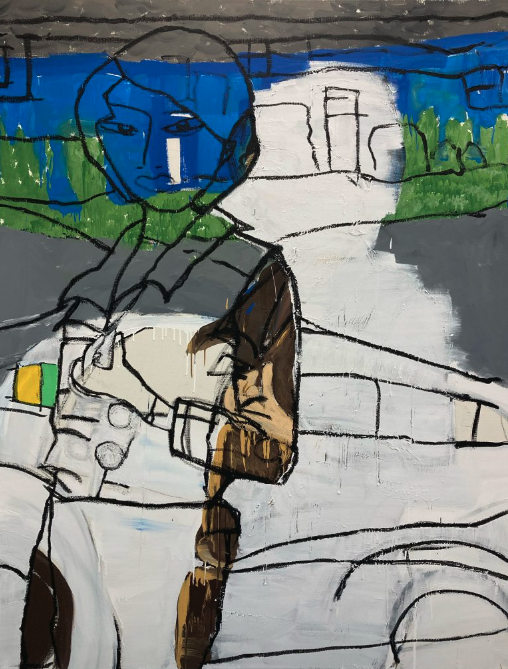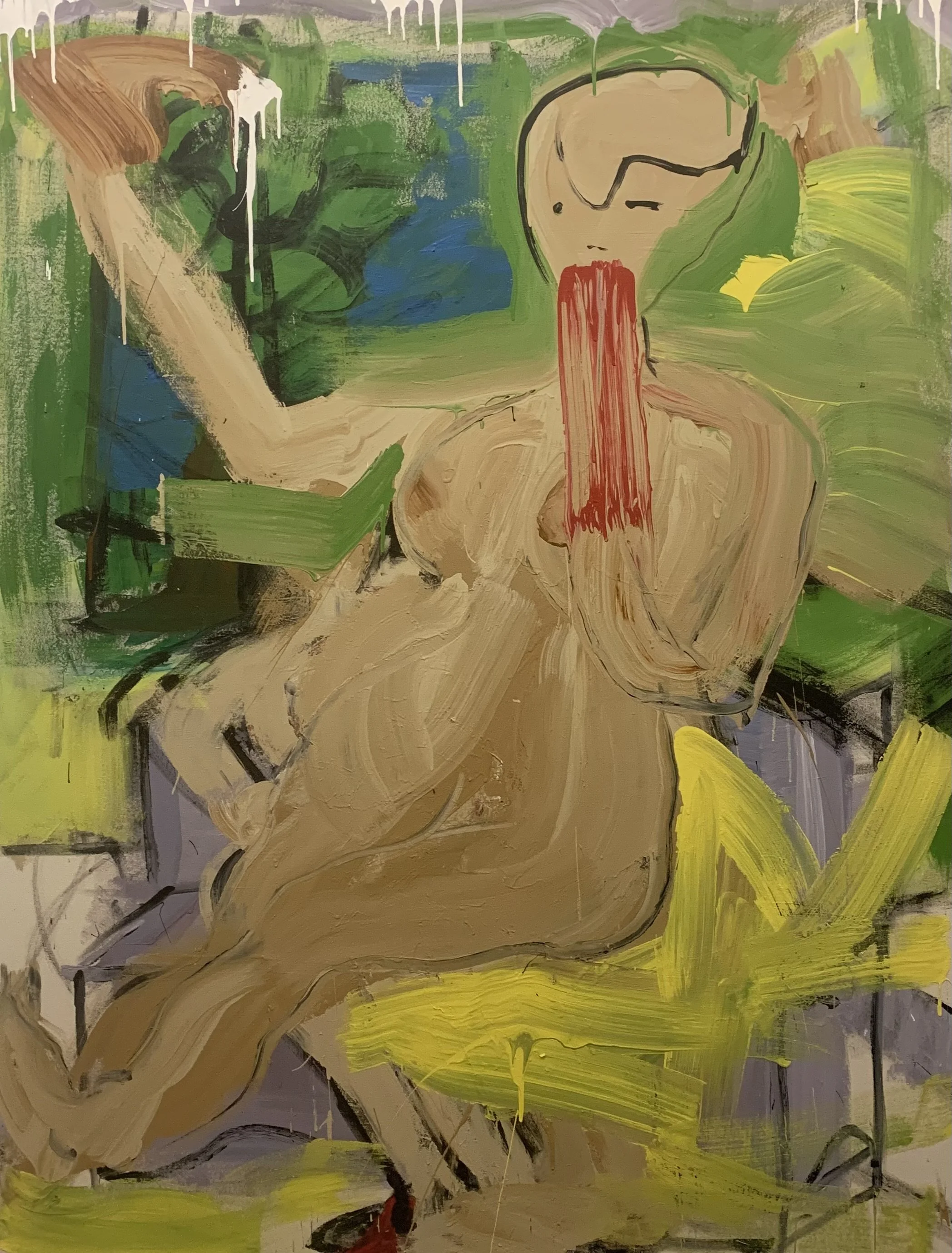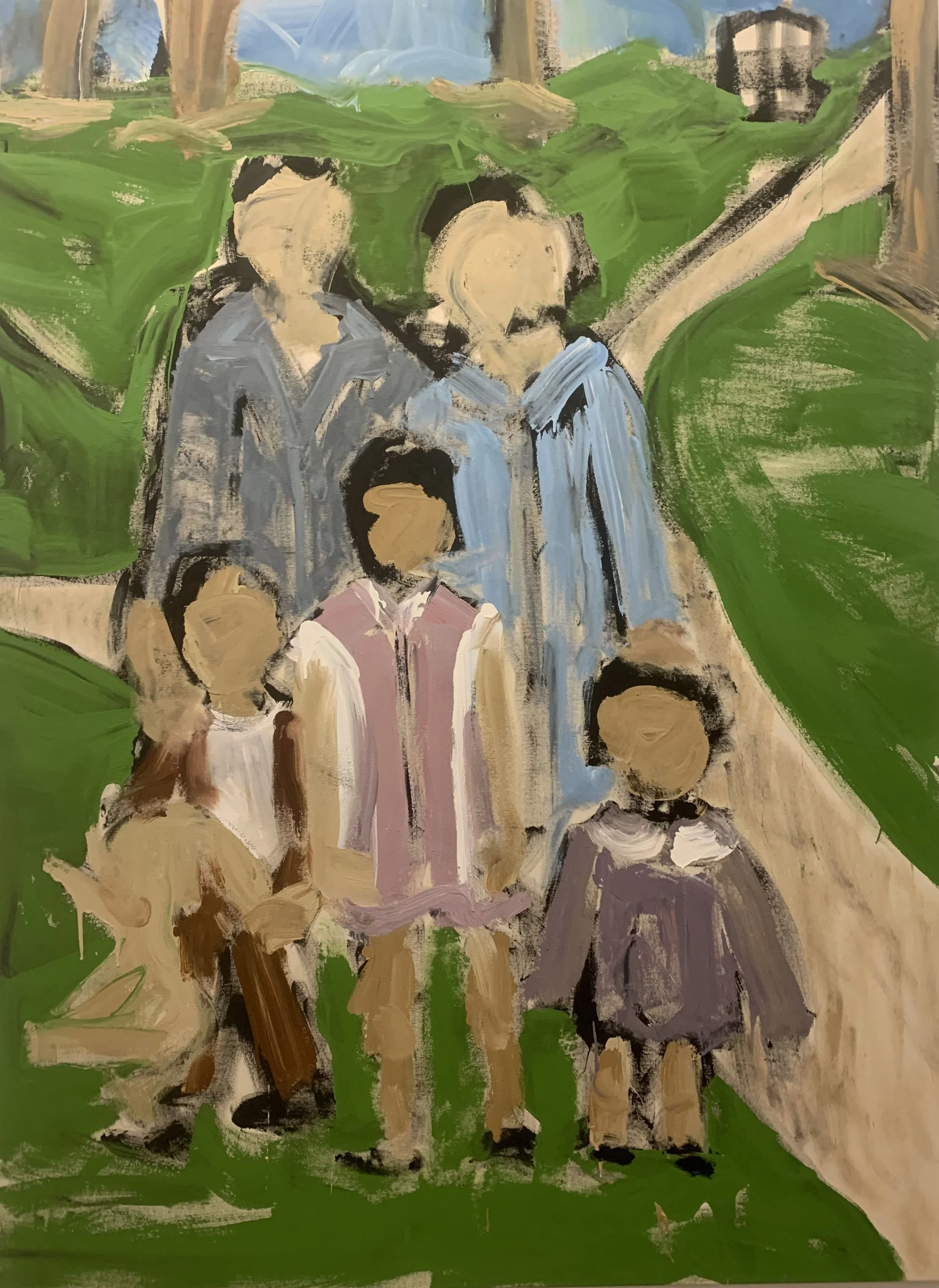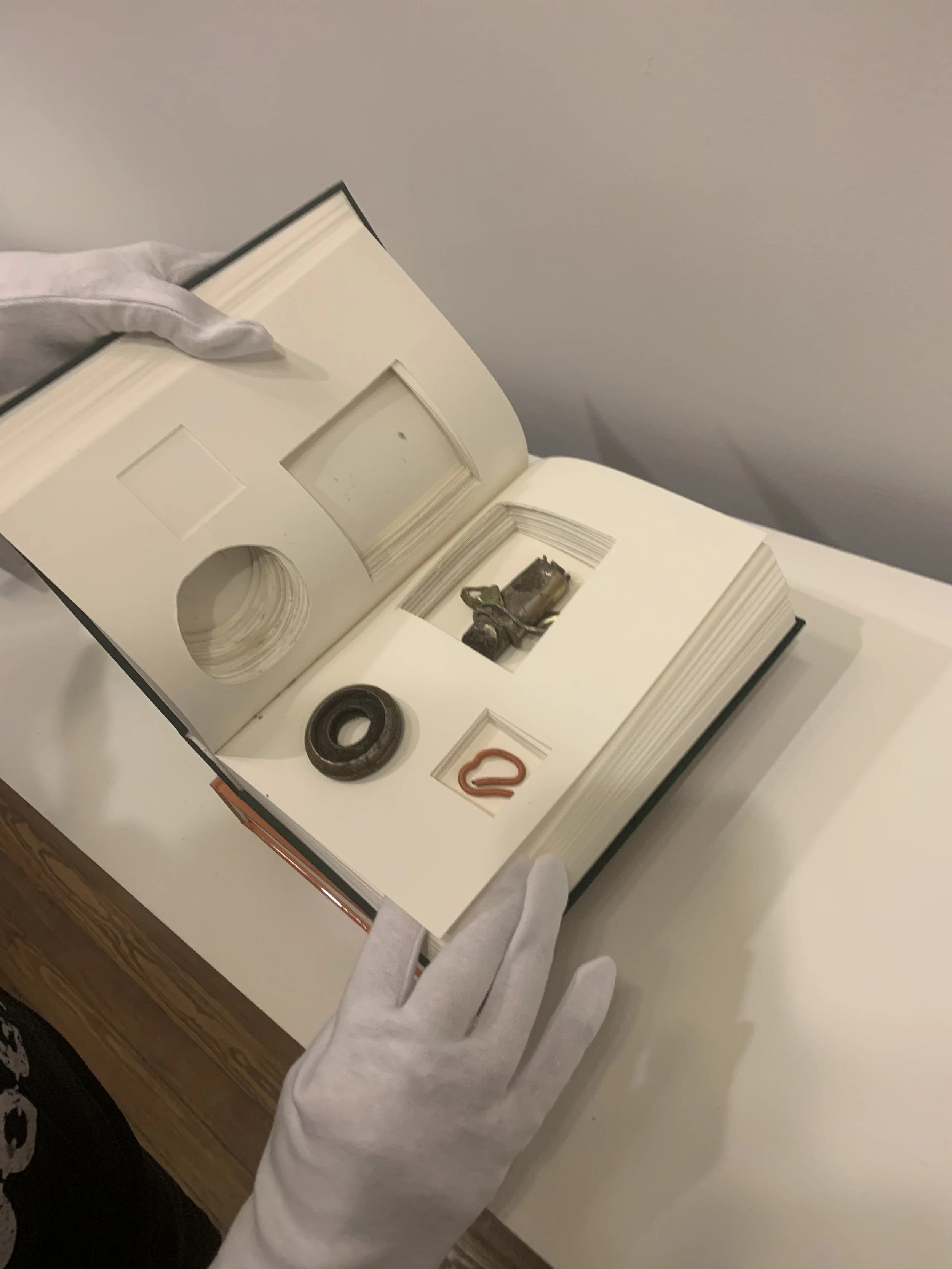Lucy Liu’s Art at New York Studio School
Lucy Liu, “What Was,” 2023, acrylic on canvas, 78 x 58 inches
Award winning Hollywood star Lucy Liu brings her fine art to the New York Studio School in Lucy Liu: what was, on view from March 4 through April 16, 2023.
Borrowing its title from one of Liu’s most recent paintings, the exhibition explores themes of family, memory, and identity in the artist’s large-scale paintings and her “Lost and Found” series. Exhibitions at the New York Studio School, 8 W 8th St, are free and open to the public from 10am to 6pm daily.
Baby’s First Christmas, 2017, acrylic on canvas, 78 x 58 inches
Liu interrogates her familial past through paint and palimpsest. Family portraits form the basis of the five canvases from 2016, though only one retains its visual referent. At the center of Family Portrait, a painting based on a photograph, a family of five stands motionless in a park posing for a camera. The group’s classical pyramidal composition connotes closeness and stability. Yet the faces of impasto swirls and the energetic brushstrokes capture the murky, impermanent edges of memory and affect. Liu obliterates the family portraits in the other canvases with sweeping, expressionist brushwork, and large, spirited figures. These bodies are unbound and uncontained, their flesh spilling across their permeable borders. Buried beneath these enigmatic surfaces, the past can never be wholly known or reconstituted.
Family Portrait, 2016, acrylic on canvas, 78 x 58 inches
Liu’s two recent paintings What Was and What Stays evidence a turn toward a more graphic idiom that extends her explorations of figure and ground, revelation and concealment. Liu began to reexamine her relationship with her family, particularly her mother, during the COVID-19 pandemic and as her own relationship with motherhood deepened. A Chinese woman who immigrated alone to the United States in 1960 at the age of 18, Liu’s mother confronted racial and gendered discrimination. Central to these two canvases is a linear outline of Liu’s mother based on a photograph taken in 1965. In What Was, she leans against what appears to be a vehicle on a nondescript street. On the right side of her body, a hand and brown clothing are all that remain of who was once beside her, now a ghostly white form mirroring her own. That space of physical, temporal, and psychic overlap, the “what was,” is there and not there—always touching the present despite being left behind.
Cake and Candies, 2016, acrylic on canvas, 77 x 587 3/5 inches
In What Stays, Liu superimposes her mother’s outline upon a gesturally painted playground scene based on a photograph from Liu’s childhood. A girl approaches the end of a vertiginous slide and is about to return to the stability of the earth. A boy beside her stands with his back to the viewer, looking into the cityscape beyond. The vertical pole around which the spiral slide twists tethers together the foreground of the woman with the scene behind, forming a sort of spinal column as the radiating steps branch out like ribs across her hollow form. The obliviousness of the children to the woman casts her relationship to them in an ambiguous light—an ambivalent absence and presence undergirding their childhood. Unlike the earlier body of work, these paintings retain rather than obscure the referents of Liu’s past, generously and honestly delving into the complexities of her autobiography.
As a child roaming the streets and playgrounds of New York, Liu began a lifelong practice of collecting found objects whose use value had long passed. Her dedicated interest in salvaging the disregarded has culminated in her ongoing “Lost and Found” series. Liu rehouses her objets trouvés inside books bound in discarded fabric from an Italian printing house. Now numbering more than 200 volumes, the books and the objects affixed within, which range from shells and glass to sculptural remnants and rusted cans, have found a new purpose. Together, the lost and disused represent an archive of place and memory, like photos in a photo album. Because Liu encourages visitors to touch and turn the pages of these books, the viewer becomes a part of the objects’ lives, and vice versa—the archive ever expanding. The thoughtfully composed sequences of these mysterious relics invite formal and conceptual connections in a process of discovery, joy, and surprise. Debossed on the spine of each richly bound book is a rendering of a human spine—a recurring motif for Liu. The interplay between these two spines speaks to the embodied experience of structuring and supporting a body of disparate elements that were once lost but have now been found.
Viewed together, the paintings and the “Lost and Found” series address the personal and universal conditions of family, displacement and belonging, archives, and the limits of knowing. Liu’s archeological investigations of her physic and physical landscapes ask what was and what remains.
Lucy Liu currently lives and works in New York City. Her artistic practice ranges from painting, sculpture, collage, silkscreen, and installation. Her first solo exhibition, Unraveling, was held at Cast Iron Gallery in New York in 1993, and her work has since been exhibited and collected around the world. Her most recent solo exhibitions include One of These Things Is Not Like the Others, Napa Valley Museum Yountville, Yountville, CA (2020), and Unhomed Belongings, National Museum of Singapore (2019).






